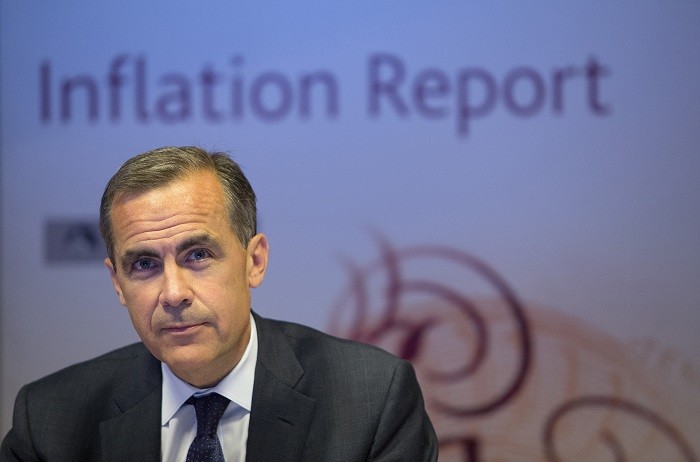Thursday the 6th of August signalled no change in Bank of England’s
interest rate (Currently 0.5%), China’s central bank getting ready to move its
weight in the direction of returning to devaluation, in order to boost exports,
and from the other side of the Pacific, the looks of the US dollar strength
year on year 20% bringing thoughts on the soon to be basis rate increase by the
Federal Reserve.
| S&P 500 Turmoil |
Carney’s MPC
When double the information is released, as well as Mark Carney’s
patented monetary trick of forward guidance, a market feels more reassured.
An 8-1 vote amongst the MPC committee, reaffirmed the near whole
agreement of the current state of inflation targeting. Not only was the move
concrete, it marked also the strength of the Canadian central banker’s hold at
sailing the market through unknown hotspots arising.
The Forward guidance Mark Carney delivered was however the thought of
many analysts; the UK economy is ‘in need in care’. The absolute truth and gut
feeling for the majority, after an interesting summer change in growth levels,
they know things could soon spike like a thunderbolt from the heavens, right
down to the ground.
Reasons?
Most greatly mentioned is falling commodity prices, leading to lower
inflation, also the continuing unknown course within the Euro-zone area, Russia
and the slowdown in growth within the Far East and emerging economies.
Hopefully due to this Carney could hopefully see the weighing scales to dip on
either of the following two.
- Most
consumers will decide to save, increasing MPS,
- Consumers will be driven to
consume more, due to the fall in production, fall in commodity prices, the
price of goods will become less, keeping inflation positive.
As much as the second will help GDP, the first is more of a key issue,
when it comes to either stagnation or end of the growth cycle.
Far East Volatility
Last week has been quite the roller coaster ride as Asian Stocks bore a
significant plunge in value on Monday, then making a deep recovery by Thursday; Is this
the end of Chinese volatility?
| Vix Volatility Index S&P 500 |
At the beginning of August, The Peoples Bank of China conducted
devaluation of their international yuan currency, in order to help boost
exports to deal with the crash in the Chinese markets. Though the delivery of
the information was poor. The sudden unexpected change in the exchange rate
policy, led to market turmoil that only calmed after clarification by the PBOC.
“China will maintain economic operations within a reasonable range”
The initial feel by the markets led to a global selloff of risky assets,
as they believed it was a reaction to the abrupt deterioration in Chinese
growth.
In the following days, China clarified the message by ensuring that the
move they had made in devaluation was designed to
“Enhance market-orientation and benchmark status”.
The acknowledgement of poor communication had the effect of calming the
markets, as the above statement gave light to moves the PBOC had made. First
their purchasing of currency, the knowledge of $3.6Tr USD being in reserve, as
well as US federal reserve rate hikes being on the horizon soon enough. Domestically also the Renminbi’s
real exchange rate has appreciated >25% since 2007.
Forecast
The gut feeling of analysts and my own personal assumptions, are that we
can expect a steady slowdown in Chinese growth. This of course, leading to
weaker demand in commodities, thereby having a knock-on effect on the Australian
economy. At the end meaning, that portfolio diversification is crucial and that
we should expect more surprises from China, as they grapple to deal with a
crucial situation with their economy.
Economic Forecast: The Weather in Rio is looking bleak
For the body of Christ that towers over Rio, the Brazilian government
also sees the world looking down. The country faces the end of its commodity
growth cycle; and if that was not enough huge corruption, declining consumer
confidence and preparation towards the Olympic Games.
Due to the rise in supply of oil, slowdown in emerging market production
levels, and weak capital markets, Brazil is facing a dire position. The major
fall of the Petrobas scandal, in its corruption and rescue cost to the economy,
has only contributed more to the slowdown in economic growth and widening of
the Brazilian deficit.
 The situation, began by Brazil revaluating its surplus targets that
sparked a selloff of Brazilian assets. Soon enough it led to an announcement by
Standard & Poors, warning of the investment status being downgraded.
The situation, began by Brazil revaluating its surplus targets that
sparked a selloff of Brazilian assets. Soon enough it led to an announcement by
Standard & Poors, warning of the investment status being downgraded.
Brazil is desperately trying to take control of its inflation. In the
last seven meetings of Brazil’s central bank, there has been an increase in
interest rates each time, which now stands at 14.25%. Coupled together with two
consecutive quarters of declining GDP, South America’s largest economy is now
in recession.
